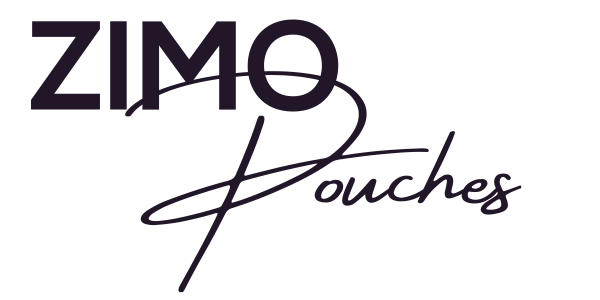Nicotine pouches have significantly impacted U.S. nicotine users and have the potential to completely disrupt the purchasing patterns of adult nicotine consumers, yet their rich heritage, deeply rooted in Scandinavian culture, remains a lesser-known story.
To understand the evolution of nicotine pouches, we must journey back to 19th century Sweden, where their precursor, snus, first emerged. This article explores the origins and transformation of nicotine pouches, tracing their journey from traditional snus to the modern, tobacco-free alternatives popular today.
The Origins: Swedish Snus in the 19th Century
In the 19th century, Swedish farmers and workers were seeking a convenient way to enjoy tobacco without smoking. This led to the creation of snus, a moist tobacco product placed under the upper lip. Snus became immensely popular in Sweden due to its discreet usage and long-lasting flavor. Unlike chewing tobacco, snus did not require spitting, making it a socially acceptable alternative to smoking.
Snus played a crucial role in Swedish culture, particularly in rural areas. Its production was an artisanal process, with tobacco leaves cured, ground, and mixed with water, salt, and other ingredients to create a paste-like substance. This mixture was then portioned into small pouches, which users tucked under their upper lip for an extended nicotine release. The success of snus laid the foundation for future innovations in smokeless nicotine products.
It is widely accepted that the Swedish smoke free story began with snus. Long-term epidemiological evidence finds the use of snus comes with a significantly reduced risk of developing diseases. This strongly suggests that the use of snus has been a long-term contributor to lower smoking rates in Sweden, as well as to its lower incidence of smoking-related disease and death.

As health awareness increased in the late 20th and early 21st centuries, the demand for tobacco-free alternatives grew. Enterprising manufacturers sought to create a product that retained the convenience and satisfaction of snus but without the health risks associated with tobacco. This led to the development of nicotine pouches, which offered a clean, modern solution for nicotine users.

Nicotine pouches were designed to be similar in form to snus but with one crucial difference: they contained no tobacco. Whether it is Zyn or an independent brand like Zimo or Sesh, nicotine pouches are made using a blend of food-grade fillers, synthetic nicotine, flavorings, and sweeteners.
Tobacco-Specific Carcinogens
Nicotine pouches are free from carcinogenic tobacco specific nitrosamines because they are made from synthetic nicotine rather than tobacco leaves. A peer-reviewed 2023 study published in Biomed Central tested ZYN nicotine pouches, moist snuff, snus, Nicorette and nicotine gum for “Harmful and Potentially Harmful Constituents” (HPHCs).
Tobacco-leaf derived snus had a five to 12-fold lower level of HPHCs than moist snuff, providing a scientific basis for Sweden’s decision to embrace snus all those decades ago. But synthetic nicotine pouches outperformed snus and were comparable to the pharmaceutical industry’s nicotine replacement therapy (NRT) products:
“No nitrosamines or polycyclic aromatic hydrocarbons were quantified in the ZYN and NRT products. Overall, the number of quantified HPHCs were similar between ZYN and NRT products and found at low levels.”
Swedish Model for Smoking Cessation
In 2022, it was estimated that 5% of the Swedish population were users of nicotine pouches. At the same time, the proportion of smokers had almost halved from 11% of the population in 2012 to 5.6% in 2022,60 with the decline in smoking rates accelerating as each alternative product became available. This indicates that access to alternative products like nicotine pouches may have helped remaining smokers, who were not users of snus, to quit smoking, aiding Sweden in its quest to becoming smoke free.

The Rise of Nicotine Pouches: Modern Era and Global Expansion
The first tobacco-free nicotine pouches were introduced in Sweden in the early 2000s. They quickly gained popularity among former snus users and new consumers seeking a smoke-free and spit-free nicotine experience. Brands like ZYN, VELO, and ON! began to emerge, offering a variety of flavors and nicotine strengths to cater to different preferences.
By the 2010s, nicotine pouches started to gain traction beyond Scandinavia. In the United States, where smoking rates were declining, nicotine pouches found a receptive audience. Their discreet and convenient nature appealed to many, including those seeking alternatives to smoking and vaping.
The U.S. market saw rapid growth in nicotine pouch sales, driven by increased awareness and availability. Retailers across the country began to stock these innovative products, and their popularity soared. The COVID-19 pandemic further accelerated their adoption as consumers sought smokeless nicotine options that could be used indoors without disturbing others.
The Future of Nicotine Pouches
Today, nicotine pouches continue to evolve, with manufacturers experimenting with new flavors, formulations, and delivery methods. The industry is focused on enhancing the user experience while ensuring safety and regulatory compliance. As research into the health effects of nicotine pouches progresses, these products are poised to become a staple in the landscape of nicotine consumption.

The rich heritage of nicotine pouches, rooted in Scandinavian snus, reflects a remarkable journey of innovation and adaptation. From the fields of 19th century Sweden to the modern convenience stores of the U.S., nicotine pouches have revolutionized the way people enjoy nicotine. Their story is a testament to the enduring appeal of smokeless nicotine products and their potential to shape the future of nicotine use worldwide.
The history of nicotine pouches is a fascinating tale of cultural tradition, innovation, and global expansion. As these products continue to gain popularity, they offer a promising alternative for those seeking a modern, tobacco-free nicotine experience.

